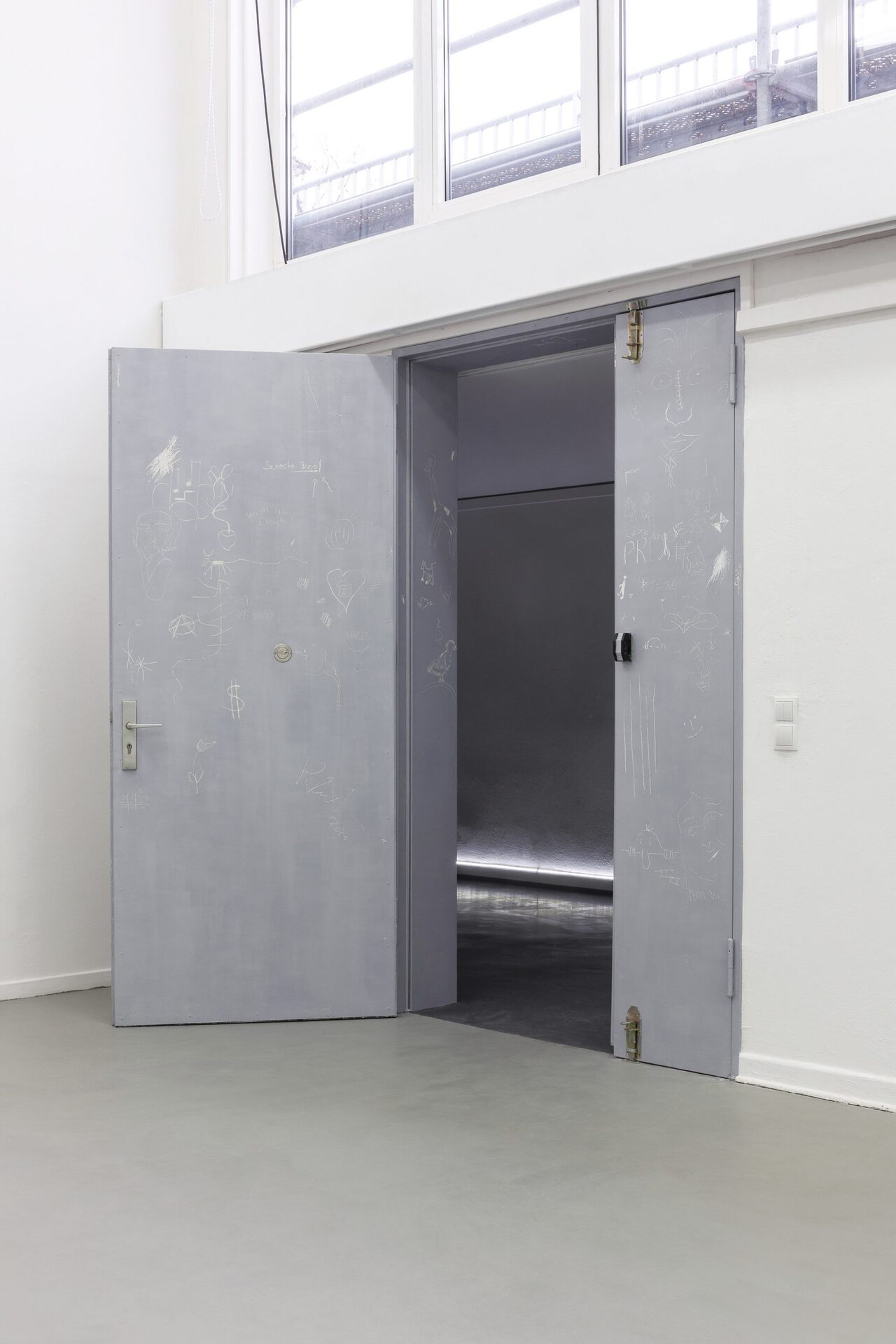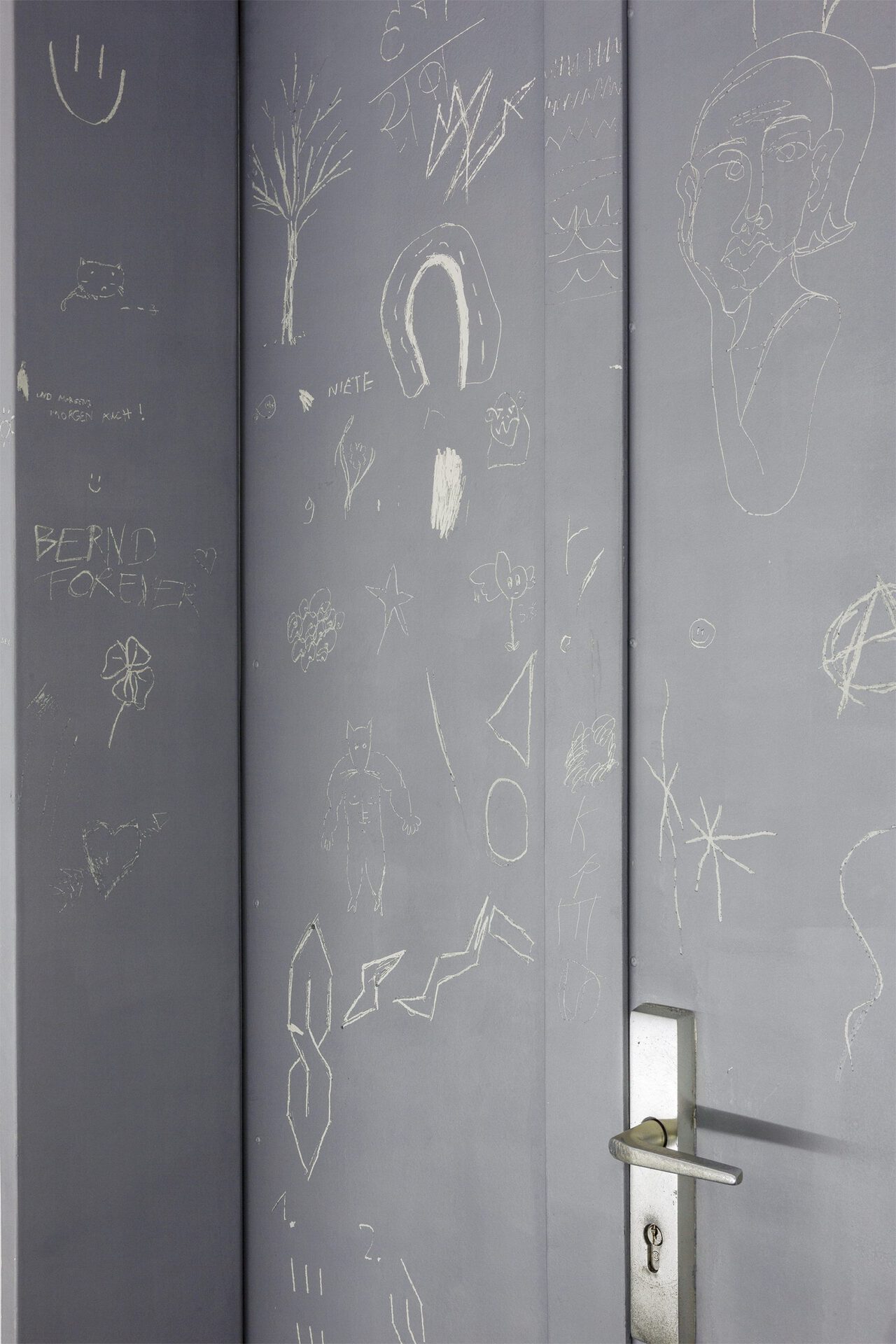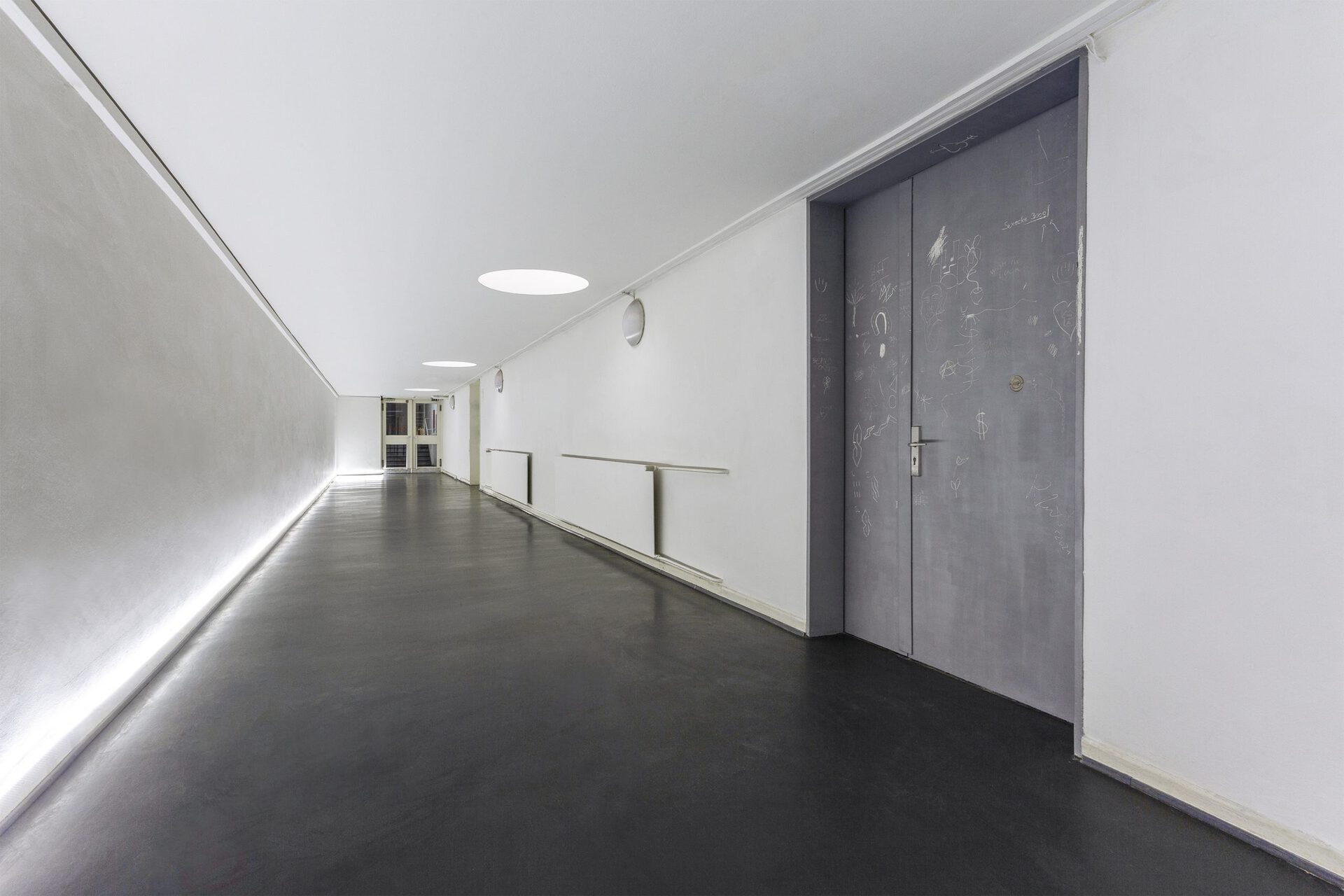Archive
2021
KubaParis
Jahresausstellung



Location
HFBKDate
11.02 –13.02.2021Curator
Simon Denny ClassPhotography
Andreas HopfgartenSubheadline
An installation by Belia Brückner & Merle DammhaynText
Luck-Up is the first manifestation of a common research on the complex of gambling. In this first of a two-part work, an entire studio door was covered with a scratch-off paint commonly used in industrial offset as well as silkscreen printing. Over the course of the exhibition and, beyond, the ongoing institutional operations, the door is gradually being returned to its original state. The rub-off silver refers to the tickets of the various lotteries offered by the stately regulated or owned German lottery companies. Their federal regulation requires companies to contribute their surplus, 30–40% of their turnovers for »public benefit« purposes. In 2020, this expenditure amounted to 3.1 billion euros, which reveals as significant when, for instance, compared with the revenue from alcohol taxation, which amounted to 2.7 billion in the same year. to »public welfare« purposes. These so-called »other levies« are largely used to promote ›culture‹. The boards, which decide upon which projects to fund or not, dispose in a merely non-transparent manner. And not even on demand the premises of their funding structures were disclosed. On the contrary, requesting the detailed annual reports revealed a bizarre distribution practice, which for example favoured shooting clubs with horrendous sums of money, which are notorious for being hotbeds of right-wing radicalisation and normalisation. The in-depth research and use of civil transparency acts also divulged grotesque director's salaries (some higher than the salary of the German Chancellor), which proof to be absolutely incompatible with the austerity principle to which public authorities are usually subject.
Statistically, lottery players are mainly recruited from socio-economic milieus with lower income and less access to education. Hence, those who enable such accumulation and also well-promotable funding practices ultimately benefit less from the redistribution to opera houses, conservatoires, museums – and art academies.
To draw attention to the structures of this unbalanced redistribution, Luck-Up deliberately occupies architectural elements. To furthermore point out this tension between inside and outside, a second work will be realised at the beginning of the semester, Clover Up: a hedge of lucky clover will be planted at the top step of the entrance staircase. This work is also significantly influenced by it’s environment – although not by the willful intervention of various actors. The clover – equally the corporate logo of the lottery companies – finds the strength to grow by drawing on outside resources; light, water and air. Alongside Luck-Up’s budging, Clover Up interacts with a growth that increasingly obstructs the access to the institution.
Merle Dammhayn